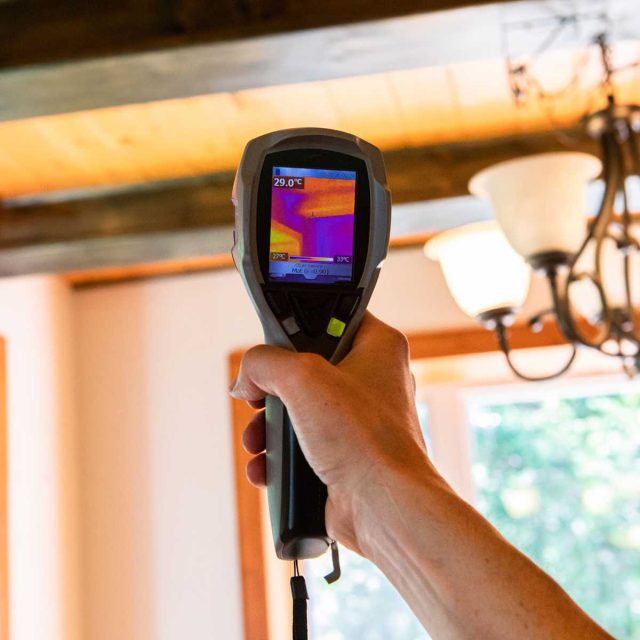When spring blossoms into summer across the colorful landscape of Michigan, there’s a renewed sense of energy and warmth in the air. Amidst the excitement, it’s crucial to recognize the significance of energy-saving practices during these seasons. While you bask in the sunlight and relish in outdoor adventures, don’t overlook the importance of insulation and the vital role it plays in maximizing savings and enhancing the energy efficiency of your home. Let’s explore some things you can do this spring and summer to embrace the power of insulation and save big on your energy bills while staying comfortable and reducing your carbon footprint.
Understanding Insulation and Its Benefits
Insulation plays a pivotal role in maintaining comfortable indoor temperatures while significantly reducing energy consumption. During warm Michigan summers, insulation prevents excess heat from infiltrating your home, causing increased heat gain. By blocking the transfer of warm air through walls, ceilings, and floors, it helps cool your home, keeping your living spaces comfortable, reducing the reliance on air conditioning systems and lowering your electricity bills. Similarly, in frigid winter months, insulation works tirelessly to prevent heat loss, creating a cozy haven indoors and minimizing the need for excessive heating. By effectively regulating temperatures year-round, insulation becomes an indispensable tool in promoting energy efficiency, comfort, and cost savings.
Evaluating Your Current Insulation Levels
 Assessing the insulation levels in different areas of your home is an important first step in building your home’s energy efficiency. Start by checking your attic for adequate insulation thickness, aiming for a recommended insulation R-value of R-38 to R-60 for Michigan’s climate. Measure wall insulation by locating electrical outlets and switches on exterior walls, as they often indicate the absence of insulation and consider adding insulation if necessary. For floors, examine the insulation in crawl spaces or basements and ensure it meets the recommended R-value of R-25 to R-30. Remember, higher R-values provide better insulating power to keep your home comfortable.
Assessing the insulation levels in different areas of your home is an important first step in building your home’s energy efficiency. Start by checking your attic for adequate insulation thickness, aiming for a recommended insulation R-value of R-38 to R-60 for Michigan’s climate. Measure wall insulation by locating electrical outlets and switches on exterior walls, as they often indicate the absence of insulation and consider adding insulation if necessary. For floors, examine the insulation in crawl spaces or basements and ensure it meets the recommended R-value of R-25 to R-30. Remember, higher R-values provide better insulating power to keep your home comfortable.
Learning About Insulation Types and Materials
Insulation comes in a variety of types, each with its own advantages and considerations. Fiberglass insulation, the most common insulation type, is very affordable and provides excellent thermal performance, but installation can be messy, requiring protective clothing and masks. Cellulose insulation, made from recycled paper products, is eco-friendly and effective at reducing air leakage but may settle over time in the attic and require occasional maintenance. Spray foam insulation provides excellent coverage by sealing air leaks and creating an air barrier. It has high insulating properties but is a larger financial investment than other insulation types. Specialty insulations are also popular options, such as mineral wool and hybrid insulation. Made from inorganic fibers, mineral wool is naturally fire resistant while hybrid insulation combines the air sealing power of spray foam with the affordability of fiberglass insulation. Take the time to explore which insulation is right for your home based on your budget and desired effectiveness.
Exploring DIY Insulation Tips
The DIY trend is alive and well. DIY insulation projects may seem simple on YouTube, but can often be more complicated, messy, and dangerous than anticipated. With any DIY project, safety should be a priority, including wearing protective gear and working in well-ventilated areas. However, most insulation projects are better left to professionals. Professional insulation contractors possess the expertise and equipment to ensure proper installation, reducing the risk of errors and maximizing effectiveness. Moreover, they can conduct a thorough insulation inspection, recommend the most suitable insulation type, and address any unique challenges, leading to long-term energy savings and peace of mind.
Hiring the Best Insulation Contractor for the Job
We’ve established that it’s best to call a professional for your insulation project, but how do you find the right one for the job? Reputable contractors are licensed, insured, and knowledgeable about building codes and regulations. When selecting a contractor, seek recommendations from friends or family, and research online reviews. Google reviews, Yelp and Angi are valuable online resources to help with your search. Obtain multiple estimates and compare pricing, but don’t solely rely on cost. Evaluate their qualifications such as certifications, industry affiliations, and years of experience. Request references and contact previous clients to gauge their satisfaction. A trustworthy contractor will provide a detailed contract, explain the insulation process, and offer warranties. Choosing a reputable professional ensures quality workmanship, optimal energy efficiency, and long-term savings.
Appreciating the Importance of Insulation Maintenance and Upkeep
The importance of insulation maintenance shouldn’t be overlooked. Regular maintenance of your home’s insulation is vital to ensure your insulation maintains its optimal performance over time. Inspecting your insulation periodically helps identify potential issues and prevent energy loss. It’s important to properly seal any gaps or repair any damaged insulation promptly to maintain your home’s energy efficiency. Look for signs of damage, such as compression, sagging, or gaps in the insulation. Moisture issues like water stains or mold growth can indicate a compromised insulation barrier and signs of wear and tear, including rodent infestations or damage from pests, which may indicate your insulation needs to be replaced. If needed, set a reminder on your phone or calendar to conduct regular inspections of your home’s insulation. Don’t forget to wear proper protective clothing and gear if you handle insulation.
Saving a Little More with Supplementary Energy-Saving Tips
 In addition to insulation, there are several energy-saving tips that can further enhance efficiency in your home:
In addition to insulation, there are several energy-saving tips that can further enhance efficiency in your home:
- Weather stripping windows and doors helps seal gaps, preventing drafts and reducing energy loss.
- Utilizing window coverings effectively, such as closing curtains or blinds during hot summer days and opening them for natural sunlight during cooler periods, regulates indoor temperatures.
- Optimizing your air conditioner by regularly cleaning or replacing filters, scheduling maintenance checks, and utilizing a programmable thermostat helps conserve energy.
- Switching from incandescent bulbs to LED light bulbs uses at least 75% less energy and lasts up to 25 times longer.
- Encouraging energy-saving habits like turning off lights when not in use and unplugging electronics when not needed can make a significant impact.
By combining these practices with insulation, you can create an energy efficient haven that benefits both your wallet and the environment.
Finding Energy Efficiency Incentives and Rebates
Striving to improve your home’s energy efficiency and carbon footprint are admirable endeavors and should be rewarded. Currently, there are many ways to do just that. Both the federal government and Michigan offer several energy efficiency incentives, rebates, and tax credits to encourage insulation upgrades and promote sustainable living.
- The newly signed Inflation Reduction Act offers numerous options for energy rebates and tax credits for upgrading your home with Energy Star appliances, improved water heaters, proper insulation and more.
- The Michigan Saves program provides financing options and rebates for energy-efficient improvements, including insulation.
- The Energy Optimization program by local Michigan utility companies offers incentives and rebates for insulation upgrades. Visit your local utility company, such as DTE Energy and Consumers Energy to learn more.
- Visit Michigan’s Department of Environment, Great Lakes, and Energy website to explore all the available programs and incentives for Michigan residents.
Monitoring Your Energy Savings
Tracking and measuring your energy savings after implementing insulation upgrades to your home is essential to gauge the effectiveness of the improvements. You can utilize various tools, apps, and energy monitoring systems to monitor your home’s energy usage.
- Smart thermostats provide real-time data and insights into heating and cooling patterns, allowing you to track your home’s energy consumption and adjust thermostat settings accordingly. *Check out the Consumers Energy Smart Thermostat Program to learn how your smart thermostat can earn you rewards.
- Energy monitoring apps, such as EnergyHub, provide detailed reports and analytics on your energy usage, helping you identify patterns and make informed decisions to optimize energy efficiency.
- Energy monitoring systems like TED (The Energy Detective) or Sense Home Energy Monitor offer comprehensive energy monitoring capabilities, enabling you to track and measure your savings accurately.
Creating an Energy Efficient Community One Home at a Time
Are you ready to supercharge your energy savings this spring and summer? By upgrading your insulation and implementing our useful energy-saving tips and money-saving opportunities, you can take advantage of cool air and cool savings throughout Michigan’s warmest seasons. Embracing these practices not only helps to save you money but helps the environment too. For more information and a free consultation, contact Whitson Insulation today. We’ve been providing our Grand Rapids community with top-notch insulation services since 1978 and look forward to helping you enjoy year-round comfort with a well insulated home too.

